- 0 Shopping Cart


How can the growth of tourism reduce the development gap?
Tunisia Case Study
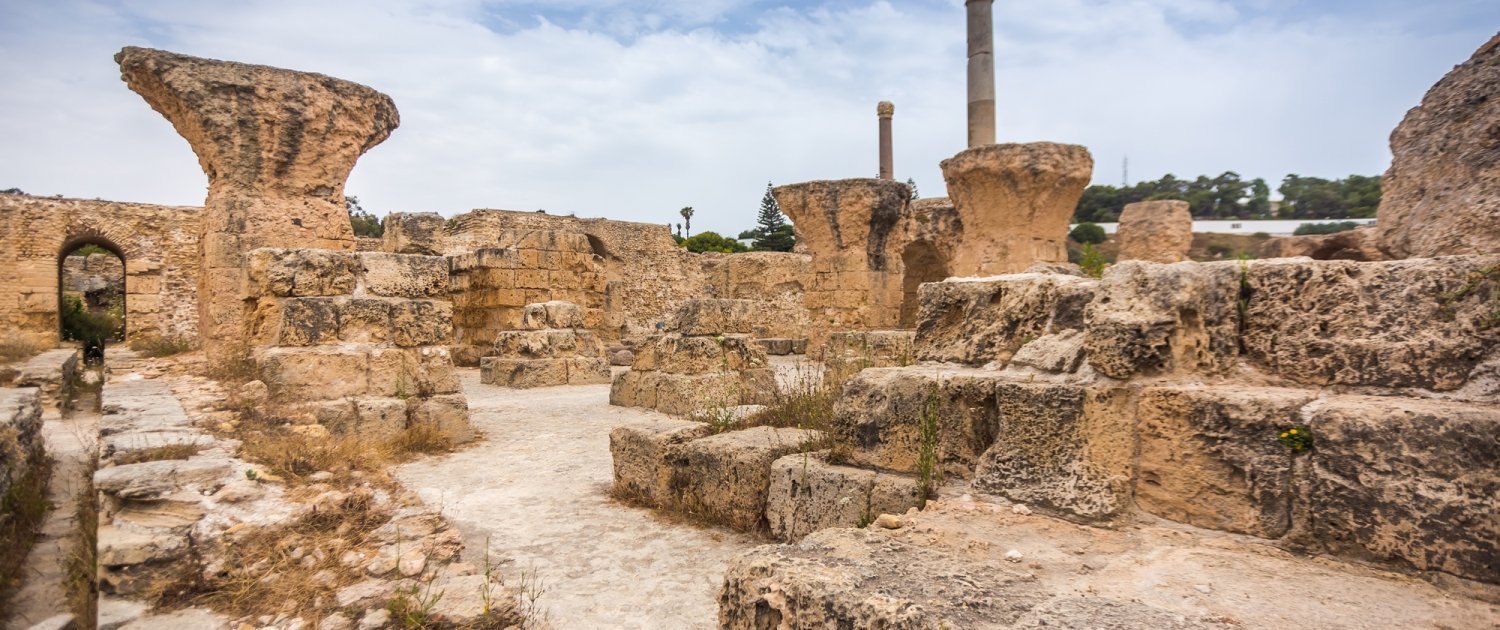
How can the growth of tourism reduce the development gap? Tunisia Case Study
Tunisia is a North African country bordering the Mediterranean Sea and the Sahara Desert. It has a favourable climate with hot summers and mild winters. It has a range of cultural and historic attractions including the ancient city of Carthage and several Star Wars locations were filmed in the country. Other attractions include the Mediterranean beaches and the Sahara desert. It is accessible via good connections with Europe.
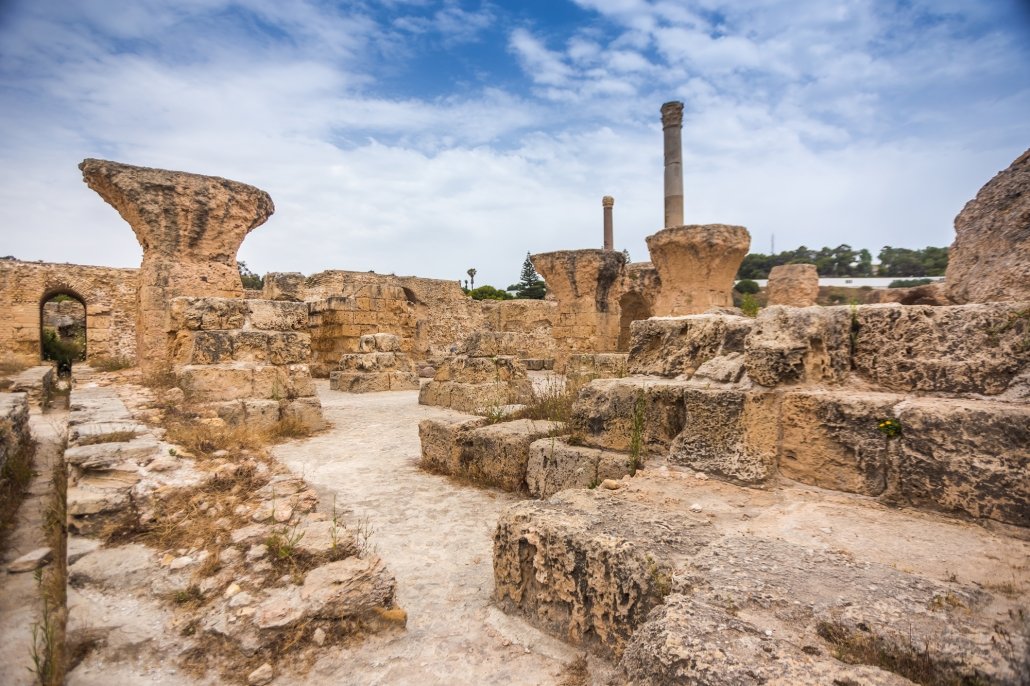
The ancient city of Carthage, Tunisia
How has tourism in Tunisia grown?
Tunisia experienced a year-on-year average growth rate of 1.14 % for the time period 1976 to 2017 . Since the recession in 2009, there has been an almost exponential growth in tourism in terms of the contribution of travel services to commercial service imports.
How has Tunisia reduced the development gap?
Over 370,00 jobs have been created in the tourism sector, boosting incomes and increasing the movement of money within the economy. The development of coastal resorts has benefited a range of local businesses including taxis, restaurants, shops and the construction industry. The growth of tourism has boosted the agricultural sector as demand for food has increased with tourist numbers. Due to the economic boost provided by tourism the government has been able to invest more money into education and health care. This investment has resulted in improved literacy rates and life expectancy .

Premium Resources
Please support internet geography.
If you've found the resources on this page useful please consider making a secure donation via PayPal to support the development of the site. The site is self-funded and your support is really appreciated.
Related Topics
Use the images below to explore related GeoTopics.
How can the growth of tourism reduce the development gap? Jamaica Case Study
Topic home, what is nigeria’s location and importance, share this:.
- Click to share on Twitter (Opens in new window)
- Click to share on Facebook (Opens in new window)
- Click to share on Pinterest (Opens in new window)
- Click to email a link to a friend (Opens in new window)
- Click to share on WhatsApp (Opens in new window)
- Click to print (Opens in new window)
If you've found the resources on this site useful please consider making a secure donation via PayPal to support the development of the site. The site is self-funded and your support is really appreciated.
Search Internet Geography
Top posts and pages.
Latest Blog Entries
Pin It on Pinterest
- Click to share
- Print Friendly
- Partner with AGBI
Diversification is key to Tunisian tourism recovery
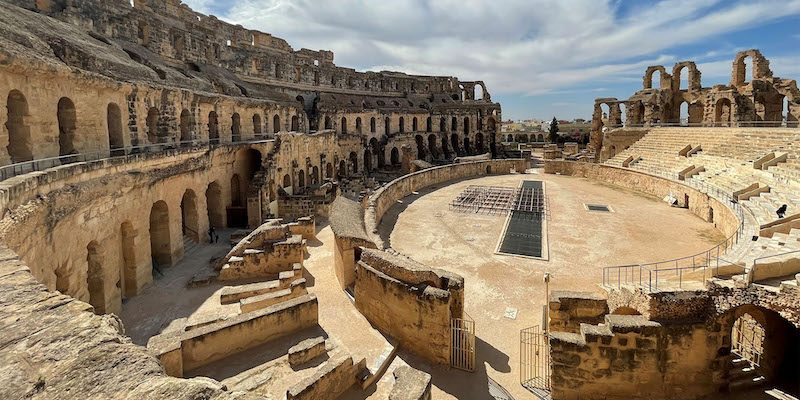
- New-generation resorts should look beyond beach holidays
- Country could capitalise more on its cultural heritage
- Political unrest has prevented Tunisia competing with Egypt or Morocco
Tunisia must diversify its tourism offerings, according to experts, as the country continues to chart a course of recovery from the effects of the coronavirus pandemic.
The number of foreign visitors to the North African nation in 2022 is forecast to reach over 6 million, as revealed by Lofti Mani, central director of promotion at Tunisia’s National Tourist Office, part of the Ministry of Tourism and Handicrafts.
The figure is slightly higher than the target under the strategy set up for the revival of tourism during 2022-2024.
The strategy aims to reach 50 to 60 percent of the tourism figures recorded in 2019 at the end of 2022; 80 percent in 2023 and a return to normal tourism dynamics in 2024.
- Tunisians protest against poverty, high prices and food shortages
- Tunisia looks to boost trade with African neighbours
However, in order to reach a full recovery, Christopher Lund, executive director and head of hotels Mena region at Colliers, told AGBI that Tunisia must adapt from its decades-long reputation as a beach and summer sun destination.
He said: “Tunisia could benefit from a plan to reposition its touristic destinations which in turn would lead to an opportunity for hotels to improve their occupancy and average rates.
“This would mean looking at new source markets to diversify the inbound tourism mix, as well as attracting new investments to develop new-generation resort complexes, destinations, masterplans and bringing new brands and concepts to the market.”
Tunisia’s main source markets this year were France, Germany, UK, Poland and the Czech Republic. There were also 1.013 million Algerian visitors.
The number of overnight stays is also up to 18.5 million nights until December 10, 36 percent shy of 2019 figures.
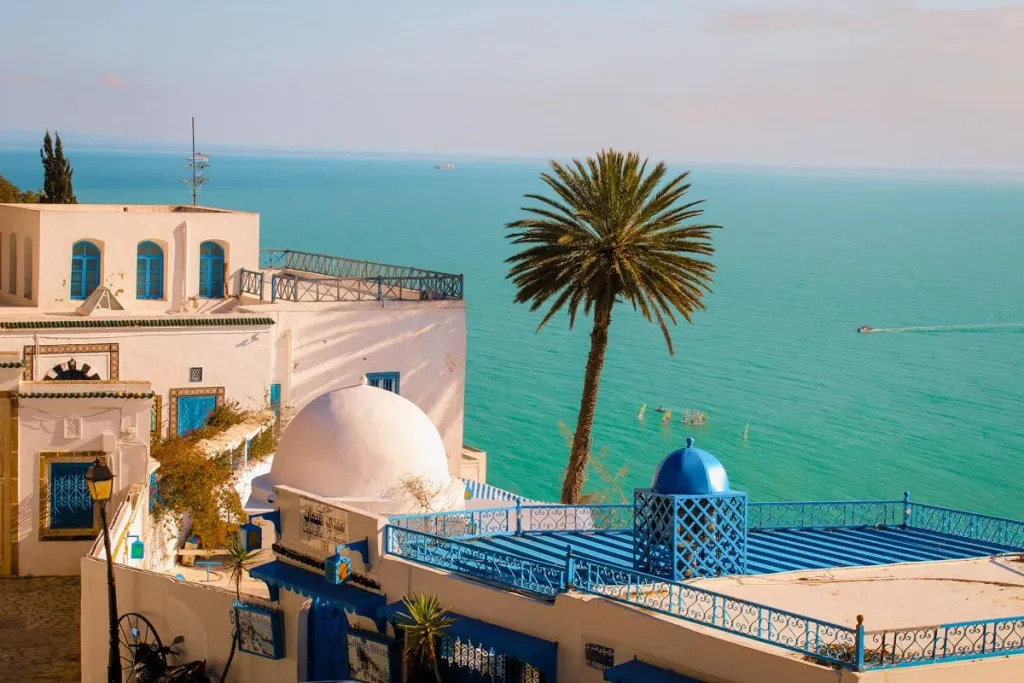
Leila Ben-Gacem, senior consultant at Blue Fish Consulting, said the switch to alternative and experiential tourism is something Tunisia can take advantage of thanks to the country’s rich landscape and cultural heritage.
“From olive farms opening up to tourists to collect olives, to startups designing a tour guide from your smart phone’s app to ceramic workshops for kids – they might be modest investments, but I believe those micro-businesses are the future of Tunisia’s tourism experience,” she said.
Several programmes have been implemented to boost the Tunisian tourism sector, supported by the EU and its Tounes Wijhetouna programme to support diversification of tourism, handicrafts development and heritage enhancement.
Visit Tunisia, a five-year, USAID-funded activity, is designed to grow and diversify Tunisian tourism, generate sustainable jobs and increase tourism revenues. The Deutsche Gesellschaft für Internationale Zusammenarbeit has its Promotion of Sustainable Tourism Programme.
Dr Ross Curran, assistant professor at Edinburgh Business School at Heriot-Watt University Dubai, said Tunisia already benefits from a diverse range of tourism offerings, from the archaeology of Carthage, to globally recognisable film set locations, such as El Jem.
“Building on this, Tunisia could see significant growth through ecological and sustainable tourism development,” he said.
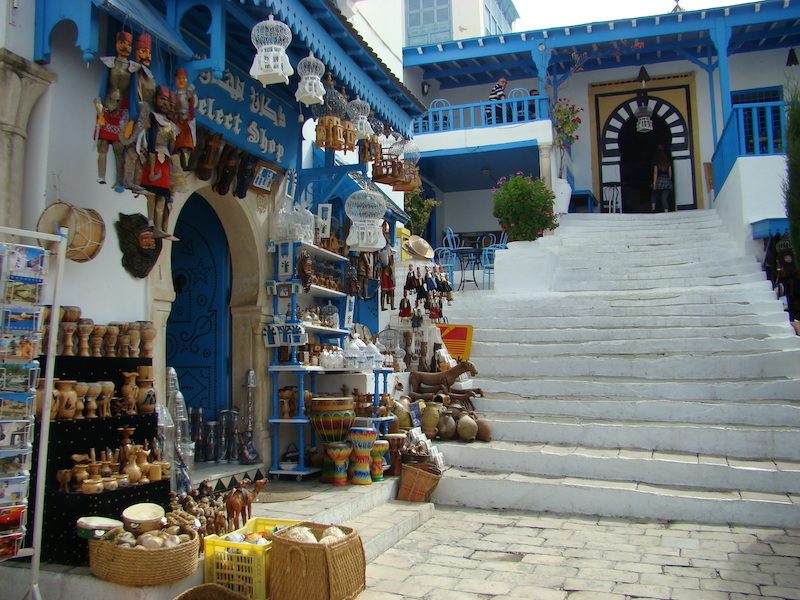
Tunisia is also gaining popularity for its affordable healthcare facilities and high standards of medical services, which makes it a preferred destination for medical tourism, which makes up roughly 5 percent of its offering.
The country was ranked 38th out of 46 global destinations on the Medical Tourism Index 2020-2021 released by the Medical Tourism Association in 2021.
“The government has created a robust ecosystem by improving the medical facilities to increase the foreign tourist inflow in the country,” added Curran.
The Tunisian government’s National Tourism Strategy 2035 aims to make the country a sustainable and competitive tourist destination.
According to the Ministry of Tourism, investment intentions of about $157 million were recorded in the first quarter of 2022.
Nadaa Ghozzi, general manager of Select Travel and Tours in Tunisia, said political unrest for the past 12 years has had a dramatic impact on the country’s economy, which has also led to a reduction in promotion budgets.
She said this must be restored in order to challenge neighbouring destinations.
“Tunisia lacks financial means today to compete with giants such as Turkey, Egypt and Morocco marketing and promotion wise,” she said.
“My view is that we are stuck in the chicken and egg paradox, where we cannot even feed the chicken in order for it to lay eggs.”
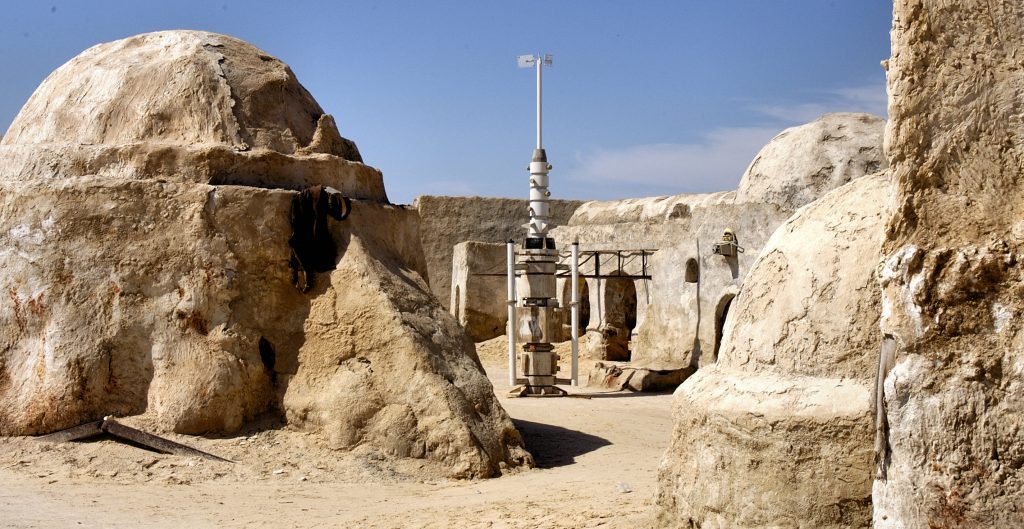
Top 5 tourist attractions in Tunisia
Amphitheatre of El Jem The impressive ruins of the largest colosseum in North Africa, a huge amphitheatre which could hold up to 35,000 spectators, are found in the small village of El Jem. This 3rd-century monument illustrates the grandeur and extent of Imperial Rome.
Kairouan Located in the centre of Tunisia in a plain at an almost equal distance from the sea and the mountains, Kairouan is the most ancient Arabo-Muslim base of the Maghreb (670 AD) and one of its principal holy cities. Its rich architectural heritage includes the Great Mosque, with its marble and porphyry columns, and the 9th-century Mosque of the Three Gates.
Star Wars Although some of the sets created for Star Wars filming in Tunisia have been destroyed by time and the desert environs, many of the structures are still standing and continue to draw visitors who wish to experience the magical atmosphere for themselves. The best-preserved Star Wars sets in Tunisia include Ksour, Matmata, Nefta and Ong Jemal.
Jugurtha’s Table This spectacular flat-topped mountain of Jugurtha Tableland is an incredible limestone mesa near the town of Kalaat es Senam, which stands almost 1,200 metres above the Ez-Zghalma plain. Legend holds that Masinissa, the first king of Numidia, built the first fortress there around 200 BC.
Chott el Djerid This large endorheic salt lake in southern Tunisia was used as a filming location for the Star Wars series, among others. It was also described in Jules Verne’s last novel, Invasion of the Sea. According to legend, it was here that the Greek goddess Athena was born.
Latest articles
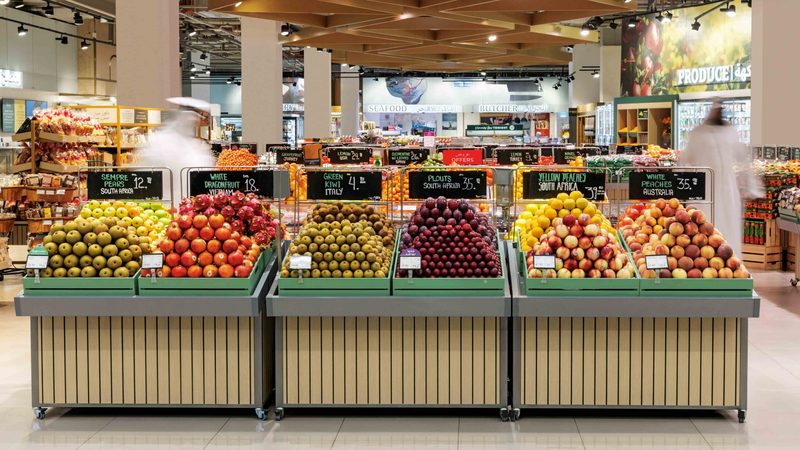
Spinneys increases UAE retail offering after high demand
Supermarket operator Spinneys has increased the size of its UAE retail offering by 40 percent on the Dubai Financial Market following high investor demand. The retail allocation has been increased from 45 million to 63 million shares, now comprising seven percent of the total shares offered, compared to five percent earlier. However, the total size […]
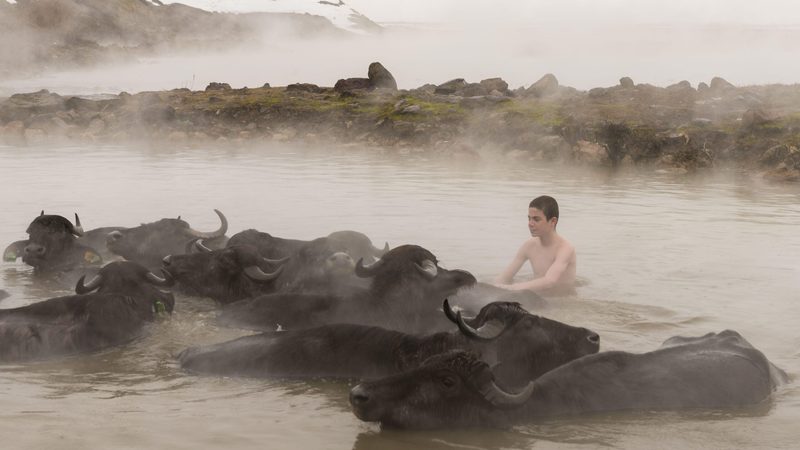
- Renewable Energy
Investors warm to Turkey’s geothermal sector
Turkey is planning to offset its hydrocarbons deficit by broadening its renewable energy base, with the country’s geothermal sector being targeted by investors as a strong growth market. Turkey’s current installed capacity of 1700 megawatts (MW) – much of which is being used in agriculture to heat greenhouses – ranks it among the leaders in […]

Investcorp buys Indian tech company for $120m
Bahrain’s alternative asset manager, Investcorp, is to acquire the digital technology business of India’s National Stock Exchange (NSE) for $120 million. NSEIT provides advanced digital transformation and cybersecurity services to global customers in capital markets, insurance and banking in India, North America and the Middle East. The services include digital engineering, data and analytics, artificial intelligence, cloud services […]

DFM operator’s profit rises 150% as revenues surge
Dubai Financial Market Company, the operator of the Dubai stock exchange, has reported a jump in net profit of more than 150 percent, thanks to a revenue surge in the first quarter of 2024. Net profit for the three-month period rose to AED89.6 million ($24.4 million), against AED35.3 million a year ago. Total consolidated revenue increased […]
Download the AGBI app today

- Architecture and Design
- Asian and Pacific Studies
- Business and Economics
- Classical and Ancient Near Eastern Studies
- Computer Sciences
- Cultural Studies
- Engineering
- General Interest
- Geosciences
- Industrial Chemistry
- Islamic and Middle Eastern Studies
- Jewish Studies
- Library and Information Science, Book Studies
- Life Sciences
- Linguistics and Semiotics
- Literary Studies
- Materials Sciences
- Mathematics
- Social Sciences
- Sports and Recreation
- Theology and Religion
- Publish your article
- The role of authors
- Promoting your article
- Abstracting & indexing
- Publishing Ethics
- Why publish with De Gruyter
- How to publish with De Gruyter
- Our book series
- Our subject areas
- Your digital product at De Gruyter
- Contribute to our reference works
- Product information
- Tools & resources
- Product Information
- Promotional Materials
- Orders and Inquiries
- FAQ for Library Suppliers and Book Sellers
- Repository Policy
- Free access policy
- Open Access agreements
- Database portals
- For Authors
- Customer service
- People + Culture
- Journal Management
- How to join us
- Working at De Gruyter
- Mission & Vision
- De Gruyter Foundation
- De Gruyter Ebound
- Our Responsibility
- Partner publishers

Your purchase has been completed. Your documents are now available to view.
13 Sustainable Tourism Growth and Climate Change Impacts: Case of Tunisia
From the book sustainable tourism dialogues in africa.
- X / Twitter

Supplementary Materials
Please login or register with De Gruyter to order this product.
Chapters in this book (32)
Take advantage of the search to browse through the World Heritage Centre information.
Case Study: Ichkeul National Park (Tunisia)
- Toolkit About the Sustainable Tourism Toolkit How to use this guide? Our Objective Resource Library
- Guides Strategic foundations Guide 1: Understanding Guide 2: Strategy Guide 3: Governance Guide 4: Engagement Core Delivery Guide 5: Communication Guide 6: Infrastructure Guide 7: Value Guide 8: Behaviour Guide 9: Investment Guide 10: Monitoring
- Case Studies Guide 1: Historic Town of Vigan Guide 2: Angkor Guide 2: Ichkeul National Park Guide 3: Melaka and George Town Guide 4: Avebury Guide 4: Old and New Towns of Edinburgh Guide 4: Great Barrier Reef Guide 4: Røros mining town and the circumference Guide 5: Røros Mining Town and the Circumference Guide 6: Cornwall and West Devon Mining Landscape (United Kingdom) Guide 7: Røros Mining Town and the Circumference Guide 8: Wadi Al-Hitan Guide 9: Land of Frankincense
Baseline situation
Ichkeul National Park is characterized by a very specific hydrological functioning system, based on seasonal alternation of water levels and salinity. The lake and surrounding marshes constitute a stopover for hundreds of thousands of migratory birds, such as ducks, geese, storks, and pink flamingos that winter at Ichkeul.
It was placed on the List of World Heritage in Danger in 1996 due to dams upstream that had cut off nearly all the fresh water flow to the lake and interfered with the natural flora, resulting in a severe decrease in the number of birds stopping in the Park.
What did they do?
In order to involve stakeholders at all levels, the Ichkeul National Park Management Committee was formed with representatives from local communities, the Ichkeul Agricultural Development Group, government authorities, and various other parties.
Maintaining tourism was deemed fundamental – a UNESCO-funded marketing campaign promoted the Park as a tourist destination, and a new visitor centre was built. Local schemes trained Park guides and raised awareness of the sensitive nature of Ichkeul National Park, and protection measures were implemented around the Park itself, restricting human access while working towards restoring the equilibrium of the wetlands.
Strategic priorities
- Educating local population and tourists about the sensitive nature of the wetland ecosystem.
- Involving local communities in the management of the World Heritage site.
- Eliminating or minimizing other practices and conditions that negatively affect the site, including hunting, grazing, and air pollution.
- Restoring the natural equilibrium of the wetlands, specifically the necessary water levels, salinity, and flora.
- Attracting tourists, and implementing a sustainably strategy that does not negatively affect the eco-system of the Park.
What worked?
After receiving funding from UNESCO’s emergency assistance fund, the Park initiated a marketing campaign and established basic guide-training and credit schemes . This increased the involvement of local businesses and communities in tourism activities, expanded local employment, and enables a greater distribution of the economic benefits from the tourism industry. In order to involve stakeholders at all levels , the Ichkeul National Park Management Committee was formed with representatives from local communities, the Ichkeul Agricultural Development Group, government authorities, and various other parties.
The ‘tourist offer’ was expanded to include nature trails , guided tours, bird-watching, traditional hammams (hot baths), excursions to the douars (tented camps) and local villages, amongst others. Maintaining particular routes has kept visitation pressures low and resulted in raising awareness about conserving the Outstanding Universal Value (OUV) of the site and the importance of using the wetlands in a sustainable manner.
Adaptation measures have been developed and water supply planning now accounts for the consumption of fresh water by the lake and marsh. Freshwater inflow from the dams upstream and exchanges of salted water with the sea downstream is regulated, and a tailored scientific monitoring programme has also been implemented
What was tough?
Funding had to be established before any of the positive changes could be initiated. Furthermore, the active promotion of the National Park as a tourism destination has come about through the cooperation between the Park authorities and tour operators, travel agents, and the Tunisian National Tourist Organization – these relationships had to be developed.
How did they get buy-in?
The value of the site as a tourist destination was recognized , along with the realization that the negative effect of the dam affected the value of the Park and the local community. Regaining and increasing the attention of tourists was recognized as necessary for the future of the site, and the increase in tourism has generated income which, in addition to contributing to to the maintenance of the Park’s infrastructure, feeds into the local economy.
What are the results?
Ichkeul National Park was taken off the Heritage in Danger List in 2006, after being on the List for over ten years. Tourist numbers have doubled (approx. 50,000 per annum), but t he impact of increased visitation is kept low as general access to the marshes and the lake is restricted to special circuits with observation towers and look-out points. Approved routes are well-marked, and trained local guides for tourists ensure the protection of the marshes from negative tourism pressures.
Training schemes mean that local residents have the opportunity to enter the tourism sector more easily, making tourism more sustainable in the long term as local knowledge, awareness and involvement has increased. The increase in tourism has generated income, which, in addition to contributing to the maintenance of the Park’s infrastructure – its visitor centre for example – and to conservation management, feeds into the local economy via the wages of a local workforce.
What lessons can others take from this?
The OUV of many World Heritage sites, particularly natural sites, is derived from their unique habitat and the wildlife it attracts. However, these conditions are fragile and require a specific balance of conditions that depend on minimal human impact. This renders their attractiveness as tourist destinations problematic, and in order to maintain the conditions that are valued, the inevitable impact of any human visitation must be kept to the minimum.
The Ichkeul National Park was on the Danger List for ten years before being removed in 2006. Positive change does not happen over night! But Ichkeul National Park shows that with hard work, a clear vision, and the inclusion of the local community, positive change can be implemented with even the most delicate of sites visited sustainably by tens of thousands of tourists.
For more details regarding collaboration and implementation of Ichkeul's strategy, see the decision document from the 27th World Heritage Committee session here (pg. 11).
Developing a strategy for progressive change
All Case Studies
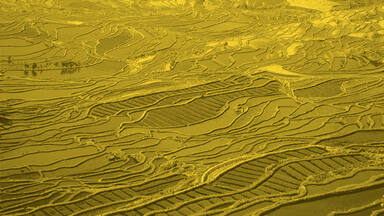
- International
- Schools directory
- Resources Jobs Schools directory News Search
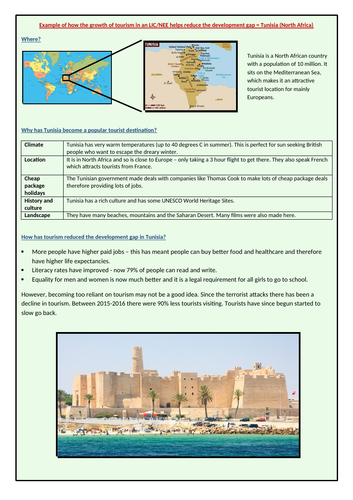
Tunisia tourism case study
Subject: Geography
Age range: 14-16
Resource type: Assessment and revision
Last updated
4 February 2020
- Share through email
- Share through twitter
- Share through linkedin
- Share through facebook
- Share through pinterest

A comprehensive one page case study of the impact of tourism in Tunisia. Perfect for any specification, but written specifically for the AQA GCSE 9-1 course.
Tes paid licence How can I reuse this?
Get this resource as part of a bundle and save up to 75%
A bundle is a package of resources grouped together to teach a particular topic, or a series of lessons, in one place.
Case studies/Examples required for the AQA 9-1 GCSE specification
This is a bundle of 16 case studies/examples from the AQA 9-1 GCSE specification. This is a perfect set of resources to give to students to support them in preparation for this GCSE. Each case study/example is condensed to one A4 page, but contains the content that is required aligned with the specification. Each one of these is for sale at £2, but all can be bought together for £8! This has been produced by a team leader for AQA for this specification.
Your rating is required to reflect your happiness.
It's good to leave some feedback.
Something went wrong, please try again later.
This resource hasn't been reviewed yet
To ensure quality for our reviews, only customers who have purchased this resource can review it
Report this resource to let us know if it violates our terms and conditions. Our customer service team will review your report and will be in touch.
Not quite what you were looking for? Search by keyword to find the right resource:

IMAGES
COMMENTS
Tunisia experienced a year-on-year average growth rate of 1.14% for the time period 1976 to 2017. Since the recession in 2009, there has been an almost exponential growth in tourism in terms of the contribution of travel services to commercial service imports. Travel services (% of commercial service imports), % of commercial service imports.
The case of Tunisian tourism is relevant to this special issue for three reasons. First is the deep penetration of interests in the tourist sector within the Tunisian ruling elite. Second, the Tunisian case shows how the construction of a fragmented system of governance, characterised by autonomous powerful institutions, created
The strategy aims to reach 50 to 60 percent of the tourism figures recorded in 2019 at the end of 2022; 80 percent in 2023 and a return to normal tourism dynamics in 2024. Tunisians protest against poverty, high prices and food shortages. Tunisia looks to boost trade with African neighbours. However, in order to reach a full recovery ...
11 July 2015. AFP. In 2014 tourism made up around 15% of Tunisia's economy. Now that the UK government has urged Britons to leave Tunisia in the wake of June's gun attack in Sousse, there is a ...
Kacem, Moez. "13 Sustainable Tourism Growth and Climate Change Impacts: Case of Tunisia". Sustainable Tourism Dialogues in Africa , edited by Judy Kepher Gona and Lucy Atieno, Berlin, Boston: De Gruyter, 2022, pp. 219-246.
The author concludes that the relative importance of policies toward employment and women's status in connection with support for family planning has probably varied over time, with economics playing a greater role in the 1970s. Expand. Semantic Scholar extracted view of "The sociocultural effects of tourism in Tunisia: a case study of Sousse."
The study reveals that economic growth converges to its long-run equilibrium at an adjusting speed of about 25.7% in Morocco, 5.8% in Egypt, and 2.1% in Tunisia. The findings of the study confirm ...
This study has six major conclusions. First, the test results confirm that the destination efficiency is sensitive to public and private investment in the tourism industry. Second, the trade deficit has a significant negative impact on the efficiency of the country destinations. Third, tourism education and training in Tunisia do not meet the ...
The study results revealed three phases of development in Tunisia, i.e. exploration, involvement, and development. The verification of the trend function indicated that Tunisia would enter the ...
The objective of this work is the empirical investigation of the relationship between tourism and economic growth in Tunisia over the period from 1975 to 2018.
This article explores the nature and products of neocolonialism in postcolonial heritage management and tourism practices, using several case studies from Tunis including curated medina walking tours, the renovation of the Avenue Bourguiba, and expansion of the renowned Bardo Museum. ... 27 Travel and tourism, accounting for 14.2% of Tunisia ...
Baseline situation. Ichkeul National Park is characterized by a very specific hydrological functioning system, based on seasonal alternation of water levels and salinity. The lake and surrounding marshes constitute a stopover for hundreds of thousands of migratory birds, such as ducks, geese, storks, and pink flamingos that winter at Ichkeul.
The Political Economy of Tourism in Tunisia - Volume 31 Issue 1. ... the case of Zambia', and 'Coups d'Etat and African Tourism: a study of Ghana', in Annals of Tourism Research (Elmsford ... Evaluation of the quality of tourist packages in Tunisia by Polish tourists: a case study using the SERVPERF method. Turyzm/Tourism, Vol. 27, Issue ...
TOURISM IN TUNISIA From its inception as a coherent development strategy in 1962, tour- ism in Tunisia has been designed to appeal to a mass market focused around the package tour concept. ... (Table 9). A 1988 study directed by ONTT estimated that the number of jobs directly attributed to tourism ranged between 0.88 and 1.2 per hotel bed, a ...
About. Tourism Cases is a growing collection of high-quality case studies that explore and inform the development of sustainable tourism.. The case studies bring together research, experiences and expertise from tourism studies and programmes around the world. Leisure, events, hospitality: we've got it all.
Contribution of the travel and tourism industry to employment in Tunisia from 2019 to 2020 (in 1,000 jobs) Premium Statistic Direct employment in the tourism industry in Tunisia 2018-2021
Tunisia The European Training Foundation is a European Union agency that helps transition and developing countries harness the potential of their human capital through the reform of education, training and labour market systems, and in the context of the EU's external relations policy.
Tourism is viewed increasingly as an essential sector to local, regional and national reconstruction and development for economies at various scales. However, its contribution on environmental quality degradation is more important. Indeed, any increase in the number of tourism requires amounts of growing energy, which increases CO2 emissions. The objective of this article is to empirically ...
The objective of this review is to provide an overview of the studies on AR to date in tourism research. Adopting the procedures suggested by Moher et al. (2009), a literature search (with no time restriction) in relevant databases of Scopus, EBSCO Host (Hospitality and Tourism Complete), Web of Science and Google Scholar, is conducted using key words 'augmented realit*' and 'tourism ...
Tunisia tourism case study. Subject: Geography. Age range: 14-16. Resource type: Assessment and revision. File previews. docx, 1.39 MB. A comprehensive one page case study of the impact of tourism in Tunisia. Perfect for any specification, but written specifically for the AQA GCSE 9-1 course. Tes paid licence How can I reuse this?
In Tunisia, tourism is an industry which has seen continuous development and will reach 8 million tourists by the end of 2018, according to the Tunisian Ministry of Tourism. Such an evolution must be associated with good organization and the management of the large amounts of SW generated [27], which requires concrete data for decision-making.
What is the value of tourism to Tunisia? - The tourism sector now represents 6.5% of Tunisia's GDP. - Provides 340,000 jobs of which 85,000 are direct jobs or 11.5% of the working population with a high share of seasonal employment. Give some statistics about the visitors in Tunisia... - Around 7 million arrivals per year.
quizlette6727636. Preview. APHUG vocab 1.4. 6 terms. noahjohnson6624. Preview. Study with Quizlet and memorize flashcards containing terms like Where is Tunisia located?, How many people went to Tunisia in 2013 for tourism purposes?, How much has the life expectancy increased by since 1960? and more.